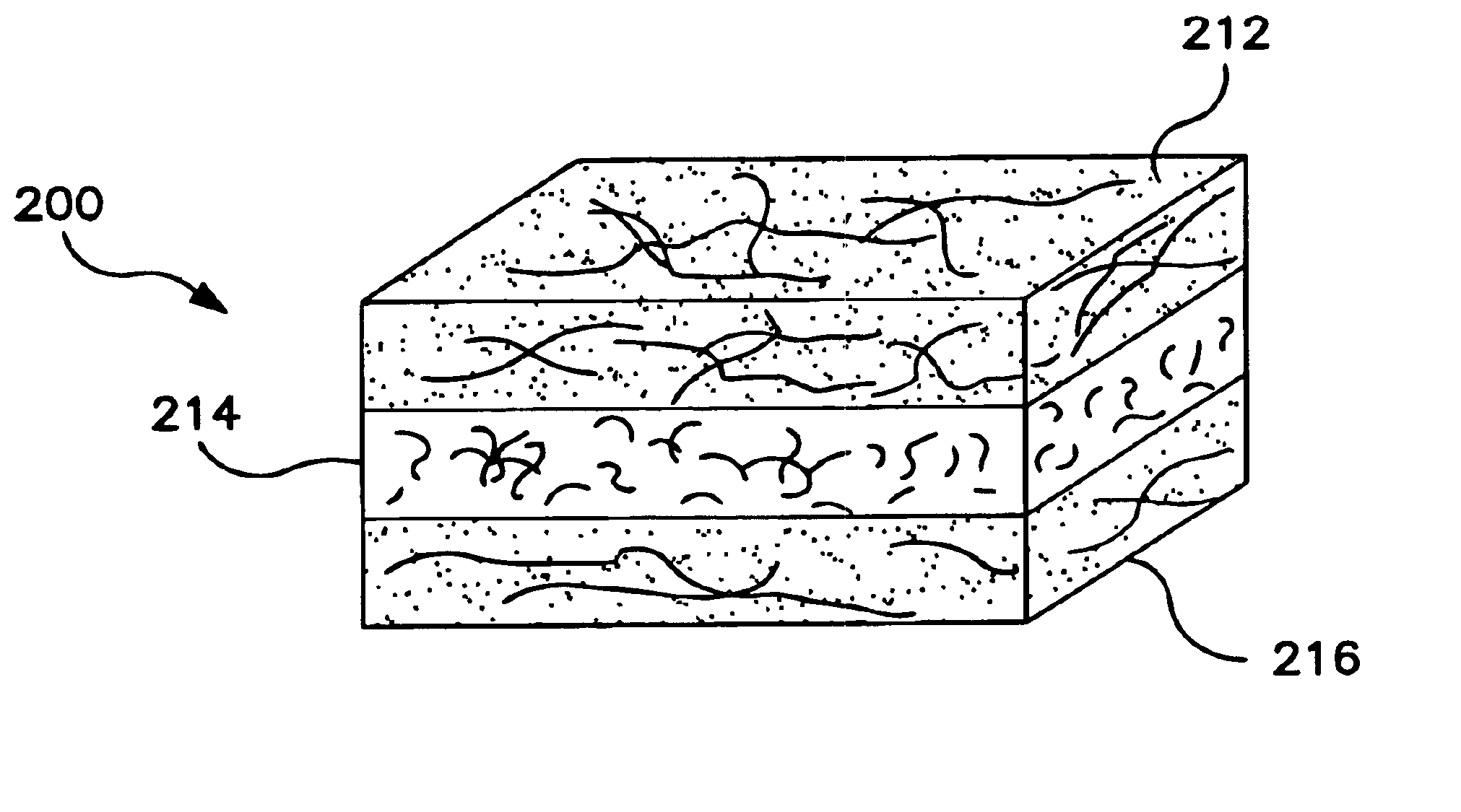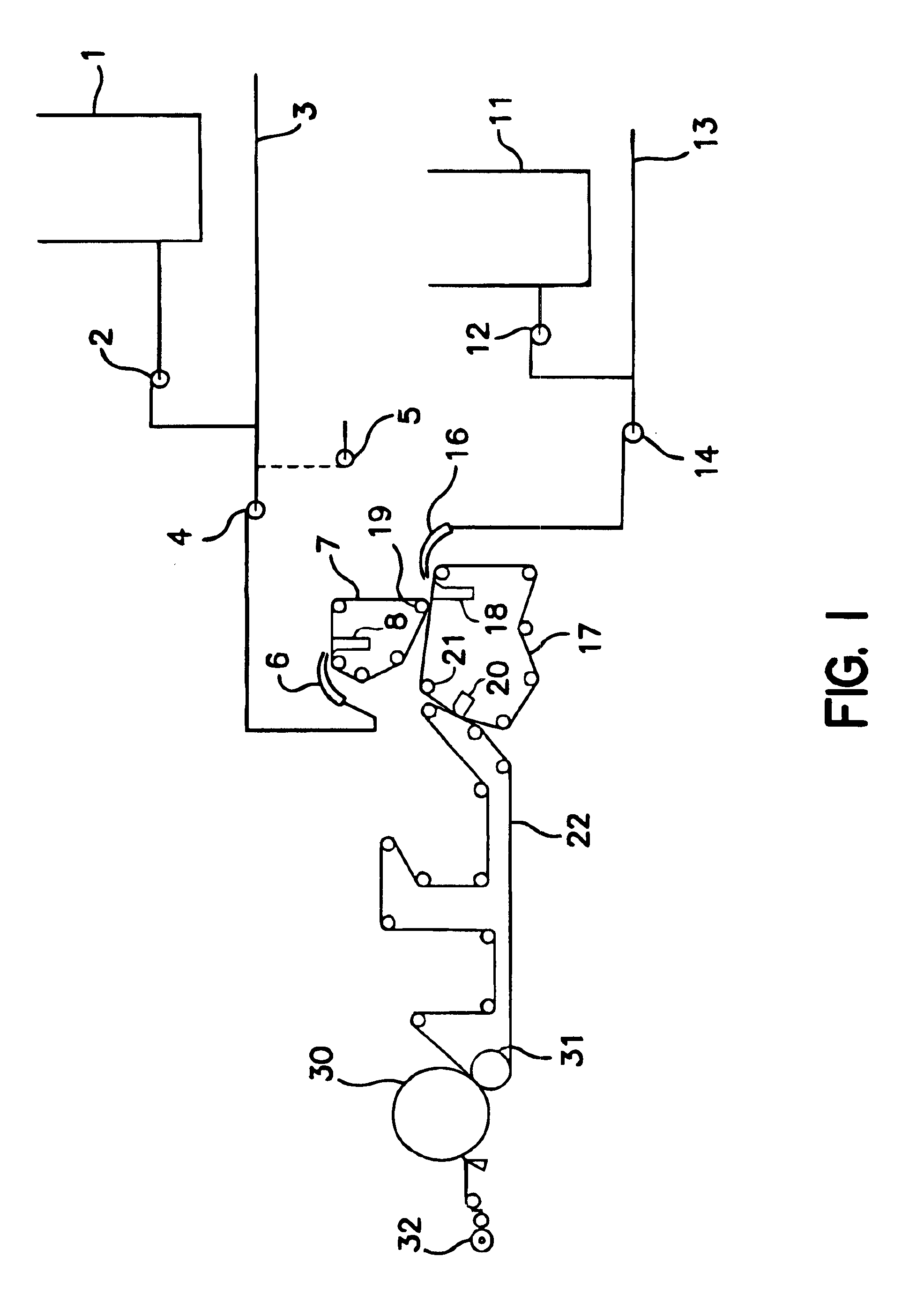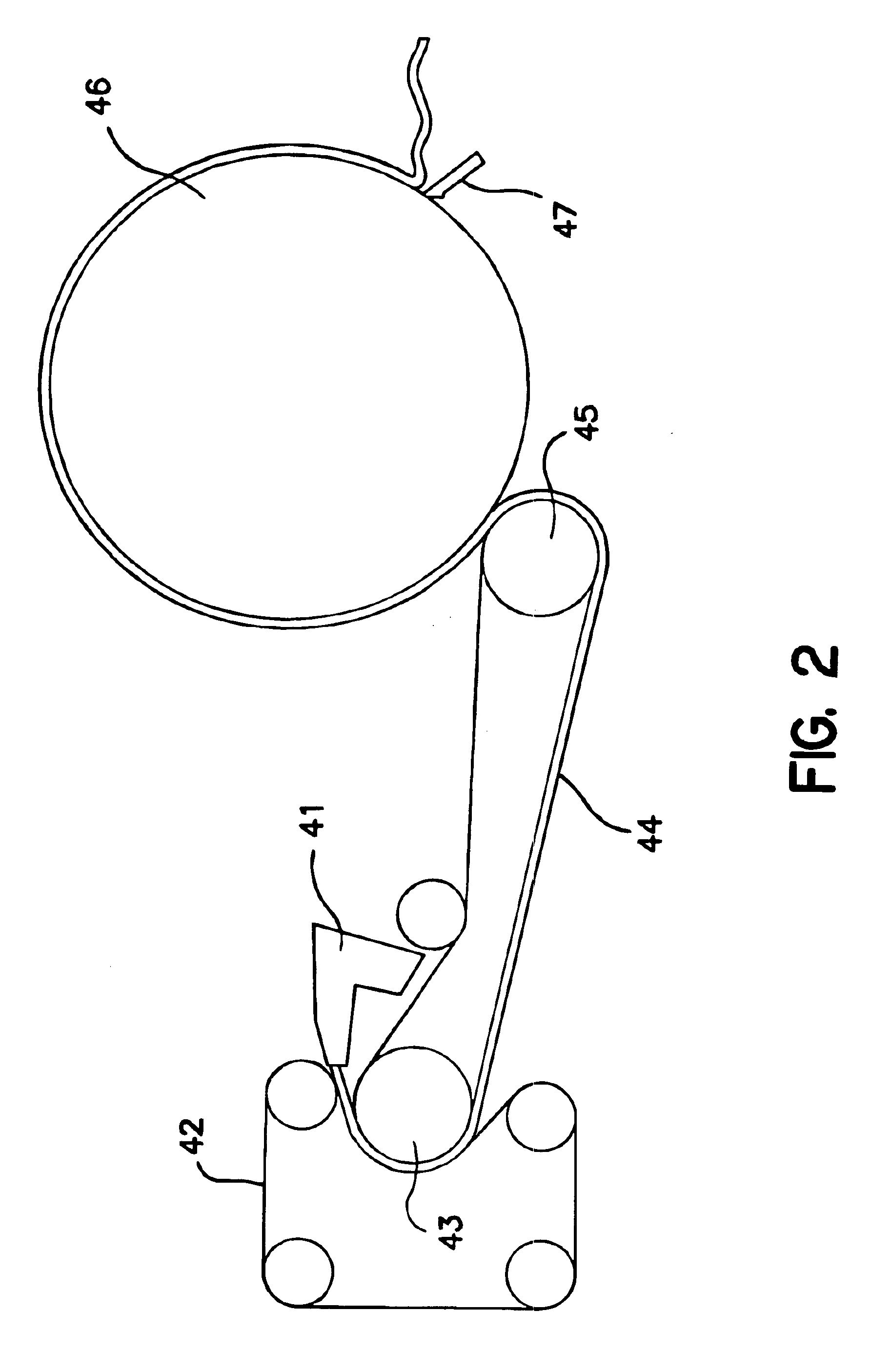Tissue products having reduced lint and slough
a technology of tissue products and lint, which is applied in the field of tissue products, can solve the problems of adversely affecting the strength of tissue products, stiffening the web, and other characteristics of products, and achieves the effect of facilitating the reduction of lint and slough and long fiber length
- Summary
- Abstract
- Description
- Claims
- Application Information
AI Technical Summary
Benefits of technology
Problems solved by technology
Method used
Image
Examples
example 1
The ability to form a paper web with low levels of lint and slough was demonstrated. Three samples (Samples 1-3) of a 2-ply tissue product in which each ply contained 3 layers were formed on a continuous former such as described above and shown in FIG. 2. The resulting composition of each layered basesheet was as follows:(1) Outer Layer #1: 33 wt. % (eucalyptus+synthetic fibers in varying amounts);(2) Inner Layer: 35 wt. % LL-19 (softwood fibers available from Kimberly-Clark); and(3) Outer Layer #2: 32 wt. % eucalyptus.
The synthetic fibers were Celbond® Type 105 polyethylene / polyester (PE / PET) fibers, which are available from Kosa, Inc. of Salisbury, N.C. These fibers had a denier of 3 and were cut to a length of 6 millimeters. The mass fraction of PE and PET was about 50%. The density of PE was about 0.91 g / cm3 and the density of PET was about 1.38 g / cm3, so that the resulting bicomponent density was about 1.15 g / cm3, which compared to a density of about 1.3 g / cm3 for pulp fibers a...
example 2
The ability to form a paper web with low levels of lint and slough was demonstrated. Four samples (Samples 4-7) of a 2-ply tissue product in which each ply contained 2 layers were formed on a continuous former such as described above and shown in FIG. 1. The resulting composition of each layered basesheet was as follows:(1) Outer Layer #1: 65 wt. % [80% eucalyptus and 20% synthetic fibers]; and(2) Outer Layer #2: 35 wt. % LL-19 softwood fibers (available from Kimberly-Clark).
The synthetic fibers were polyethylene / polypropylene (PE / PP) sheath / core (AL-Adhesion-C from ES Fibervision, Inc. of Athens, Ga.) having a denier of 1.9 and cut to length of 6 millimeters. The mass fraction of PE and PP was about 50%. The density of PE was 0.91 g / cm3 and the density of PP was 0.94-0.96 g / cm3, so that the resulting bicomponent fiber had a density of about 0.93 g / cm3; which compared to a density of about 1.3 g / cm3 for pulp fibers and about 1 g / cm3 for water. The density imbalance (Δρ), which is de...
example 3
The ability to form a paper web with low levels of lint and slough was demonstrated. Fourteen samples (Samples 8-21) of a 2-ply tissue product in which each ply contained 2 layers were formed on a continuous former such as described above and shown in FIG. 1.
The composition of each layered basesheet for Samples 8-14 and 17-19 was as follows:(1) Outer Layer #1: 65 wt. % [eucalyptus and varying amounts of synthetic fibers]; and(2) Outer Layer #2: 35 wt. % LL-19 softwood fibers (available from Kimberly-Clark).
The composition of each layered basesheet for Samples 15-16 was as follows:(1) Outer Layer #1: 65 wt. % eucalyptus; and(2) Outer Layer #2: 35 wt. % [LL-19 softwood fibers (available from Kimberly-Clark) and varying amounts of synthetic fibers)].
The composition of each layered basesheet for Samples 20-21 was as follows:(1) Outer Layer #1: 65 wt. % eucalyptus; and(2) Outer Layer #2: 35 wt. % LL-19 softwood fibers (available from Kimberly-Clark).
Two types of synthetic fibers were tes...
PUM
| Property | Measurement | Unit |
|---|---|---|
| Length | aaaaa | aaaaa |
| Fraction | aaaaa | aaaaa |
| Fraction | aaaaa | aaaaa |
Abstract
Description
Claims
Application Information
 Login to View More
Login to View More - R&D
- Intellectual Property
- Life Sciences
- Materials
- Tech Scout
- Unparalleled Data Quality
- Higher Quality Content
- 60% Fewer Hallucinations
Browse by: Latest US Patents, China's latest patents, Technical Efficacy Thesaurus, Application Domain, Technology Topic, Popular Technical Reports.
© 2025 PatSnap. All rights reserved.Legal|Privacy policy|Modern Slavery Act Transparency Statement|Sitemap|About US| Contact US: help@patsnap.com



